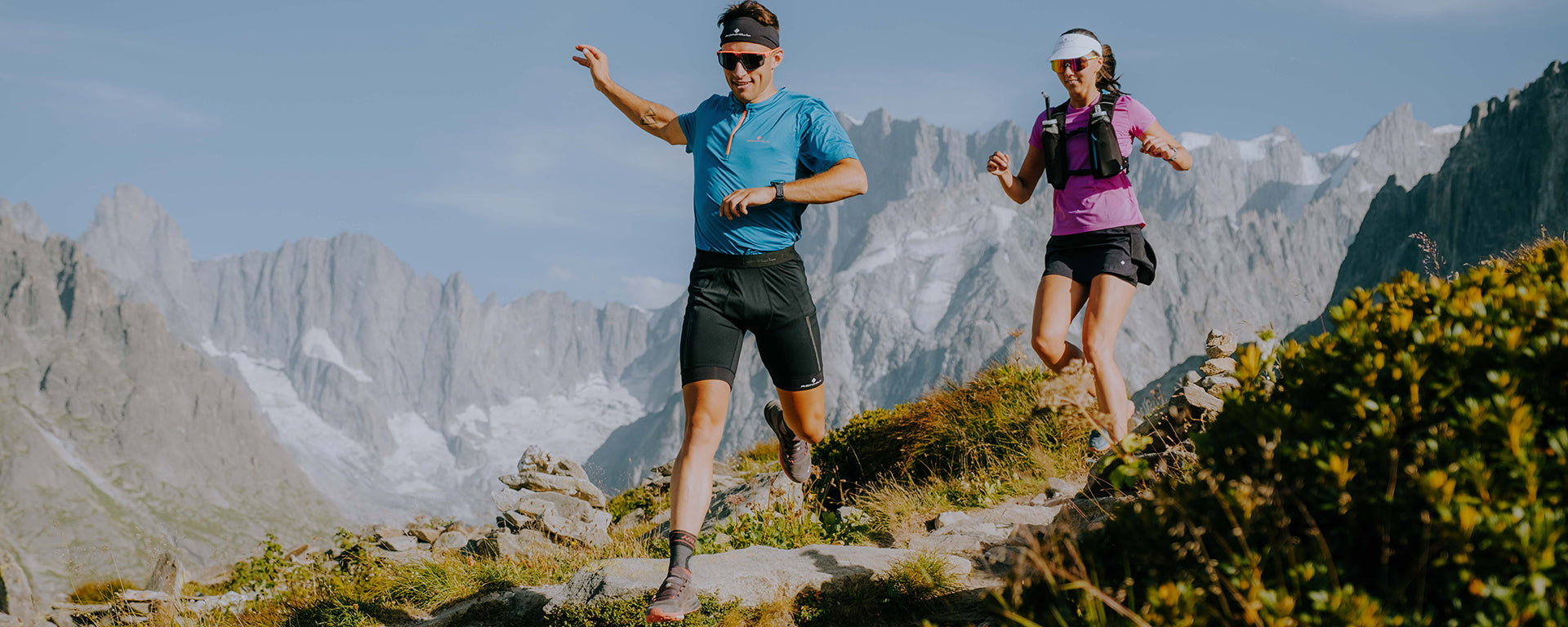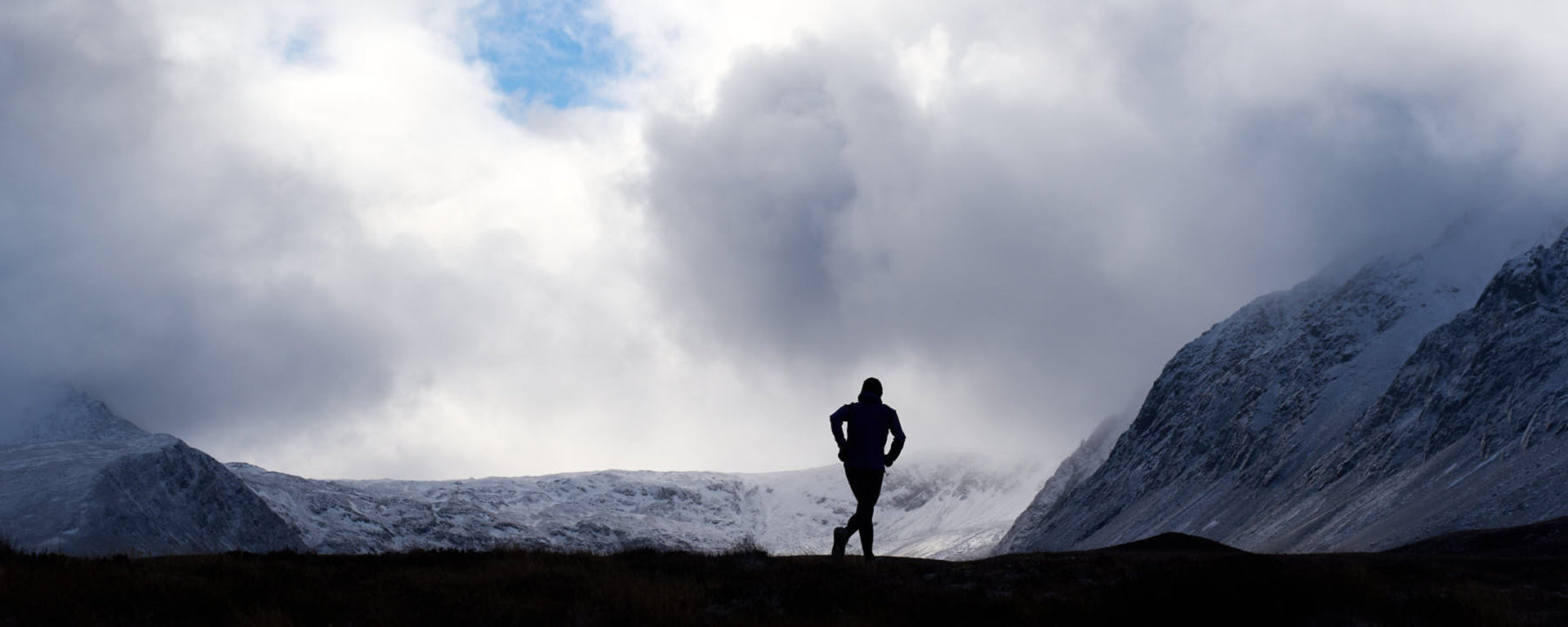What is Trail Running
If you’ve ever felt that road running was starting to feel repetitive, you’re not alone. Many runners eventually crave something more, whether it is just a change of route and scenery, or a switch up from the hard work that you usually put in on the road. That’s where trail running comes in. With fresh air, rugged terrain, and the thrill of the unknown, it’s a way to test new limits, connect with nature, and turn some of your runs into adventures.
If you are looking to get out on the trails, see what we recommend to get started, and some tips for trail runners to help you feel confident when you hit you are out in the hills or on your local trails.

What Exactly is Trail Running?
In definition, trail running is simply running on natural terrain rather than paved roads or tracks. But as trail runners will tell you, this can mean anything from neat canals, forests and woodland trails to wading through bogs on the fell sides and cutting across scenic mountain trails. Mixed with the roots, rocks, mud, and sometimes challenging terrain, this is what makes trail running so refreshing and rewarding.
Trail running is accessible to all kinds of runners. You can find routes suited to beginners, as well as more technical trails, making it easy for you to step out of your door and onto the trails. With many cities now including green spaces, there are now even more options for runners to escape the city and find trails on their doorsteps.

How Can You Start Trail Running?
To get started with trail running, you don't need to head off into the mountains or conquer UTMB just yet. As a beginner, it's important to pace yourself for any off-road runs; that way, you can prepare yourself for the difference in terrain and the impact it might have on your whole body.
At the end of the day, whether we hit the trails as part of our training to hit our next PB, or are out there to spend time with friends, taking it slow – it is all about enjoying time out on the trails, and sometimes pacing yourself can be the best way to get into the swing of things if you are used to the roads.
Here are some helpful tips for any budding trail runners.

Choose Beginner-Friendly Routes
Choosing beginner-friendly routes can mean starting local and exploring off-road trails that are right on your doorstep. These could look like exploring nearby parks, woodland trails, running near local lakes or through nature reserves to ease you into this more challenging form of running. Remember, even a gentle dirt path is trail running, so don't overthink it.
A good way to find what trails are near you is to use route plotting apps such as Komoot, All Trails or OSMaps, which have a whole choice of plotted routes of all distances and elevation gain – giving you an easy way to see what trails and scenic running spots are near you.
With the positive recent rise of run clubs, they are now also a popular way for people in many towns and cities looking to get into running, and trail running is no different. Search local Facebook groups and keep an eye on Instagram for any local run groups that get out on the trails, with it also being a great way to meet likeminded people and make new friends to get out with.

Start Slow & Build Confidence
When you’re new to trail running, focus more on enjoyment rather than speed. When starting out, it is just about getting used to things, so at this stage, don’t think about personal bests or what you see other runners are doing. Instead, take the pressure off, make the first few trail runs easy runs, and walk the steeper or more technical sections of your route.
Depending on how often you run and your weekly mileage on the roads, begin with short distances, even potentially just incorporating trails into a section of one of your road runs. Then, gradually extend your runs as you feel more comfortable with the switch in terrain and potentially elevation. Remember that trail runs can (sometimes) be more demanding than road running, so listen to your body, pace yourself, and celebrate your progress. The real goal is to stay consistent and enjoy the adventure.

What Gear Should You Use?
One of the best things about trail running is that you don't need a lot of kit to get started. Yes, there is a lot of fancy stuff seen in trail running, and specialist gear can support you and your running goals as you progress and build confidence; however, beginners can hit those trails with just the basics. Here's what you need to get started, and what you might want to consider if you're thinking about joining running events or trail running races in the future.
- Trail running shoes: All you need to get started on the trails is a good pair of trail running shoes. These are designed with a better grip for stronger traction on different terrain, such as rocks, mud, and uneven surfaces. The extra stability and protection from trail running shoes can help you keep your balance and adapt more quickly to the environment around you. Trail running shoes come in many shapes and sizes, but we recommend a good all-rounder for your first and only pair for the trails. This would mean something that is comfortable, has good grip and most importantly is built
- Clothing and weather considerations: Staying comfortable whilst trail running is essential. You don’t only have uneven terrain to manage, but also unpredictable weather conditions. Choose breathable, moisture-wicking fabrics that allow you to move freely, and add lightweight layers or a waterproof jacket in cooler or wet conditions. Seasonal essentials like hats, gloves, and sun protection will help keep you safe and comfortable year-round. And don’t forget your feet: a good pair of technical running socks can make all the difference in preventing blisters and keeping you comfortable on longer runs.
- Hydration, nutrition, and other small essentials: For short trail beginners, a simple water bottle is an essential item. For those on longer events, other items such as hydration packs or belts, and even a GPS watch can be worthwhile investments. If you're going to be out running a significant distance or for a longer period, snacks such as energy gels or bars may be helpful.

How to Improve Your Trail Running?
Once you've built up your confidence and have a few runs under your belt, you might be wondering how to take things to the next level. Progress in trail running can look different for different runners.
Some like to focus on personal bests and distance covered, while others may prefer the challenge of experiencing different terrain and perfecting their technical abilities, building strength in their legs and upper body.

Increase Distance & Technicality
Gradually adding a little more distance to your runs each time can make a big difference to your progress. Think about adding an extra kilometre at a time, or try some new trails that have more varied terrain to test your endurance. These could be steeper routes, rolling hills, rocky paths, or wetter conditions. Just remember not to rush and let your confidence build naturally.

Build Strength & Conditioning
When you're not running, strength exercises such as squats, lunges, and core work can help improve your balance and reduce your risk of injury. Improving your flexibility with stretching and mobility work, such as yoga or Pilates, can also aid recovery and improve your stability while on runs.

Enter Trail Races & Join Communities
Meeting like-minded runners can help you find support, training tips, and even new routes, all of which can help you take your trail running to the next level. Start by searching for local trail races to help you stay motivated. Being part of a community also keeps you accountable and encourages regular training, so consider joining a local trail running club to meet others who share your passion and enjoy the camaraderie on the trail.

Staying Safe on The Trail
Safety is key when trail running. Running on uneven terrain, steep paths, or in changing weather brings unique challenges, so it’s important to be prepared. Here are some essential tips for beginners to help you enjoy your trail runs with confidence.
- Tell someone your route: Always let a friend or family member know where you’re going and roughly how long you’ll be out. Many smart watches use location-sharing technology, giving friends and family peace of mind.
- Check weather and trail conditions: Check the forecast before going out. While being able to adapt to different environments and terrain is part of the challenge, be smart. If the route looks unsafe, save it for another day.
- Be aware of wildlife and follow trail etiquette: It’s important to respect nature and stick to the marked trails to avoid getting lost. Remember to yield to hikers, bikers, or other runners you meet along the way.
- Carry a small first aid kit and essentials: Sometimes it's better to be safe than sorry. So having a small first aid kit, a whistle, and a fully charged phone that you can clip to your running belt can be a big help.
Key Takeaways
Trail running is the perfect way to combine fitness, fresh air, and nature. It gives you the chance to take your passion for running to the next level by building on your balance, agility, and endurance. Remember, runners of all backgrounds can experience the joy of trail running with the right approach, trail shoes, and planning.

Trail Running FAQs
Do I need a special shoe for trail running?
If you plan on trail running regularly, trail running shoes are a good investment. They provide better grip and stability on uneven surfaces and terrain.
Is trail running more difficult than road running?
It can feel tougher due to the demands on your body from hills, uneven ground, and the variation of pace. However, some runners may find trail running easier on their joints and more varied and enjoyable when compared to road running.
Where can I find beginner trails near me?
Start by searching for events or trails in local parks or green public spaces. You may always want to check out local running clubs that can recommend beginner-friendly routes and tips.


